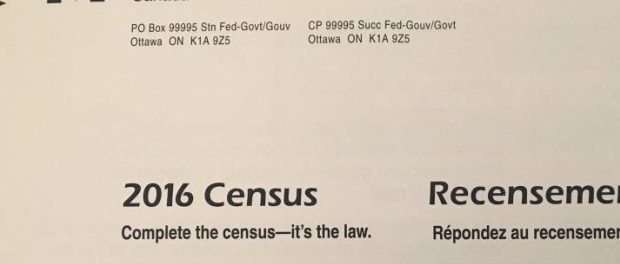More Results from Census 2016
Everyone I knew was pretty excited to fill in the census this past year.I think there’s something much more satisfying about reporting my data and ticking the boxes myself rather than having a cookie from Amazon build a portrait of me without my awareness. Certainly, the general enthusiasm to give the government our data says a lot about who we trust with this information: Stats Canada.
But stats are fun (please don’t quote me on that) and today’s report on the 2016 Census data from Stats Canada reveals a few things about how we are living today related to living and marital status and language.
Average is not a Nuclear Family
Surprise. Not really. But let’s get rid of this idea that the average family has 2.5 kids, mom, dad, and a two car garage. The largest number of households in Canada consist of single people — no kids — making up 28.2% of all Canadian households. In Quebec, this number is 33.3%, the highest of all provinces and territories. Of the households that are made up of couples,there’s a near even split between the childed and the childless. In Canada, 51.1% of households with two people have children, while 48.9% don’t have children. In Quebec, 48.3% of them have children (meaning, 51.7% don’t have children). The chart below (despite the confusing subtitle non-census-family households) should clarify just how these different household sizes match up.

Canadian Households from Stats Canada
Older Ladies Not Ready to Mingle
Living alone doesn’t mean aging alone. While more women live alone then men (53.7% of the one-person households are women), it seems that only 1/3 of senior women (33%) live alone. In comparison, only 17.5% of senior men live alone! Furthermore, the number of senior women living in a couple is 51.4%. So, if you’re a single lady waiting to meet a man, the stats suggest that your best bet is to wait until you pass the 65 mark, but maybe don’t give up your Tindr/Okcupid/Coffee Meets Bagel accounts.
Common Law is Common
Common law marriages are on the rise everywhere and have been since 1981 in Canada. In Quebec, 39.9% of people living together live together in common-law unions. This number has been growing very quickly over the years, meaning that common-law is becoming increasingly, well, common. Multigenerational household are also on the rise, even though they only make up 2.9% of all households in Canada.
Montreal Trends
Montreal’s statistics were slightly different from the rest of the province and country. The four million people of Montreal live in 1,727,310 households. 36% of census answering households in Montreal consist of married people, while 31.6% are single person households. Common-law households make up a much smaller 18.2%, with divorced, widowed, and separated households coming in at much smaller numbers. As for the over 65s, they match the general trends of the country in large. More people age 65 and older are likely to live in a couple than the 20-34 year old set. Incidentally, there are slightly more women than men in Montreal (2,000,935 men compared to 2,097,990 women).
Language
This can be a point of pride for Montreal. 55.3% of the households are knowledgable in both English and French. Bilingualism. We win. I don’t know what the Journal de Montreal is claiming this week, but French only is spoken by 36% of the households, while English only is only 7% (and 1% for neither!).
The Montrealer
In sum, if we look for the most common features that make up a Montrealer in 2016, she is 40.6 years old (taking the average age of the population of both men and women), female, and knows both French and English, with French as her first language. She lives in an apartment building that has fewer than five stories and though most households are one person homes, it is more likely that she is married.
For stats Canada information, some places to check are about Montreal specifically (HERE)






